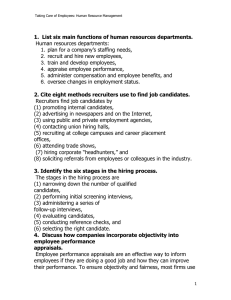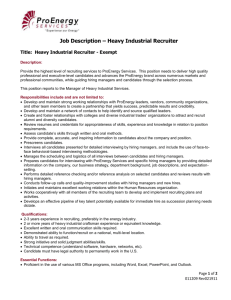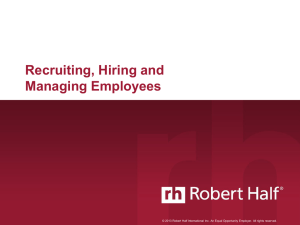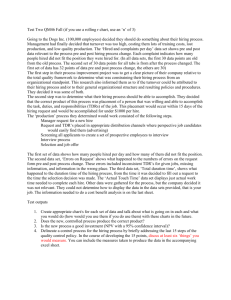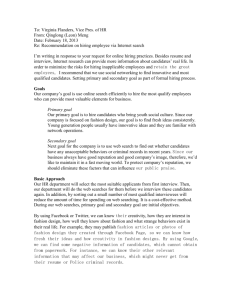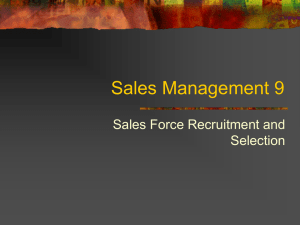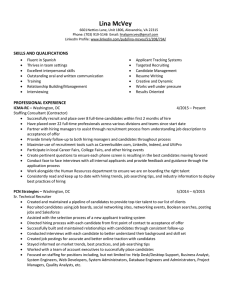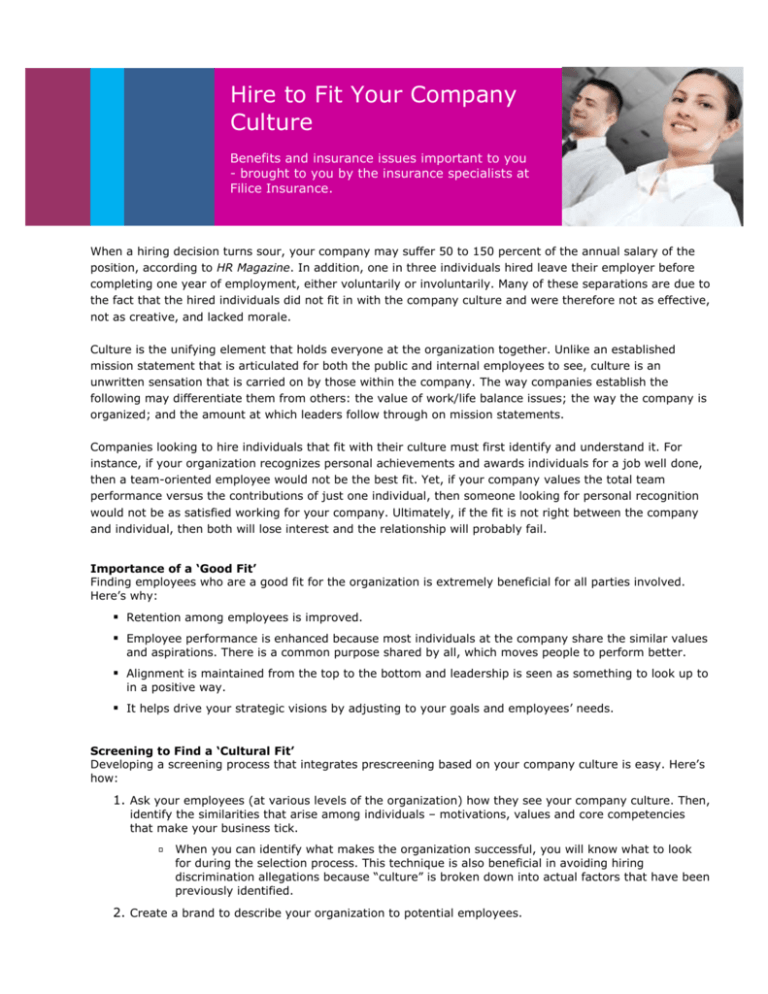
Hire to Fit Your Company
Culture
1
Benefits and insurance issues important to you
- brought to you by the insurance specialists at
Filice Insurance.
When a hiring decision turns sour, your company may suffer 50 to 150 percent of the annual salary of the
position, according to HR Magazine. In addition, one in three individuals hired leave their employer before
completing one year of employment, either voluntarily or involuntarily. Many of these separations are due to
the fact that the hired individuals did not fit in with the company culture and were therefore not as effective,
not as creative, and lacked morale.
Culture is the unifying element that holds everyone at the organization together. Unlike an established
mission statement that is articulated for both the public and internal employees to see, culture is an
unwritten sensation that is carried on by those within the company. The way companies establish the
following may differentiate them from others: the value of work/life balance issues; the way the company is
organized; and the amount at which leaders follow through on mission statements.
Companies looking to hire individuals that fit with their culture must first identify and understand it. For
instance, if your organization recognizes personal achievements and awards individuals for a job well done,
then a team-oriented employee would not be the best fit. Yet, if your company values the total team
performance versus the contributions of just one individual, then someone looking for personal recognition
would not be as satisfied working for your company. Ultimately, if the fit is not right between the company
and individual, then both will lose interest and the relationship will probably fail.
Importance of a ‘Good Fit’
Finding employees who are a good fit for the organization is extremely beneficial for all parties involved.
Here’s why:
Retention among employees is improved.
Employee performance is enhanced because most individuals at the company share the similar values
and aspirations. There is a common purpose shared by all, which moves people to perform better.
Alignment is maintained from the top to the bottom and leadership is seen as something to look up to
in a positive way.
It helps drive your strategic visions by adjusting to your goals and employees’ needs.
Screening to Find a ‘Cultural Fit’
Developing a screening process that integrates prescreening based on your company culture is easy. Here’s
how:
1. Ask your employees (at various levels of the organization) how they see your company culture. Then,
identify the similarities that arise among individuals – motivations, values and core competencies
that make your business tick.
When you can identify what makes the organization successful, you will know what to look
for during the selection process. This technique is also beneficial in avoiding hiring
discrimination allegations because “culture” is broken down into actual factors that have been
previously identified.
2. Create a brand to describe your organization to potential employees.
Depict your culture accurately so that candidates can filter themselves in or out based on
how you describe the company. If they do not see themselves fitting into your culture, they
may not apply to begin with.
To make branding more real for prospective employees, provide messages from executives,
testimonials from various employees, virtual job tours, etc.
3. Use properly validated assessments that meet legal and professional standards to screen candidates.
Candidates may complete an online assessment as part of the recruitment process before the
interview.
4. Ask questions about traits that you cannot or do not want to train someone how to do (being selfmotivated, possessing integrity, etc.). Questions should determine if candidates have values and
competencies that match with the company’s culture.
Ask behavior-related questions and then rate open-ended answers on a scale.
Ask for examples of situations in which candidates faced dilemmas or problems and
successfully overcame them.
5. Role-play during the interview process to observe candidates in action. Or, allow them to try out the
position for a day to see if it seems like a good fit for them (and for you).
This step would come after all interviewing is complete, and reference checks and résumé
verification checks are all done.
6. Know the laws applicable to hiring.
7. Create metrics for measuring cultural fit by determining cost-per-hire, time-to-fill and quality-of-hire
data.
8. Make sure management is trained on how to properly interview for behaviors.
9. Maintain accurate records of all your hiring decisions. During an audit or discrimination claim, you will
need to produce proof of your decisions.
10. Human Resources must stay on top of monitoring, learning and studying the culture of the
organization, and then design policies that align with said culture. HR should constantly be asking if
the organization is truly what it claims, if it needs to modify the culture to be more competitive and
if it is remaining compliant with all hiring laws.
Don’t Become Drained by Culture
Though finding a cultural match is extremely beneficial, sometimes desperately seeking individuals who
align with the company culture can backfire. Here’s why:
If the company promotes itself differently than how the culture really is, then prospective
employees will be lured in under false pretenses. If employees realize that they’ve been sold on a
company inaccurately, they will probably leave shortly after being hired and will lack the morale
needed to succeed while they are still there.
People who are too similar to one another tend to lack the zest needed to be proactive. If your
entire company is full of mediocre performers, no one will stand out to motivate others to work
harder. Along these same lines, groupthink may set in and laziness may ensue.
Emphasizing a company culture can become a legal exposure with regard to compliance audits
and discrimination accusations. If you do not hire someone based on the fact that they “did not
fit in with your culture” but have no quantitative proof to back this up, your organization may be
held liable for discrimination or failure to comply with equal hiring provisions.
2
This article is not intended to be exhaustive nor should any discussion or opinions be construed as legal advice.
Readers should contact legal counsel for legal advice.
Content © 2009 Zywave, Inc. All rights reserved.

